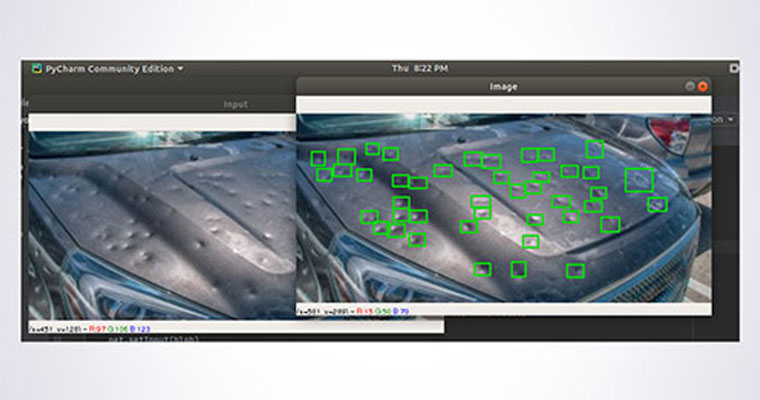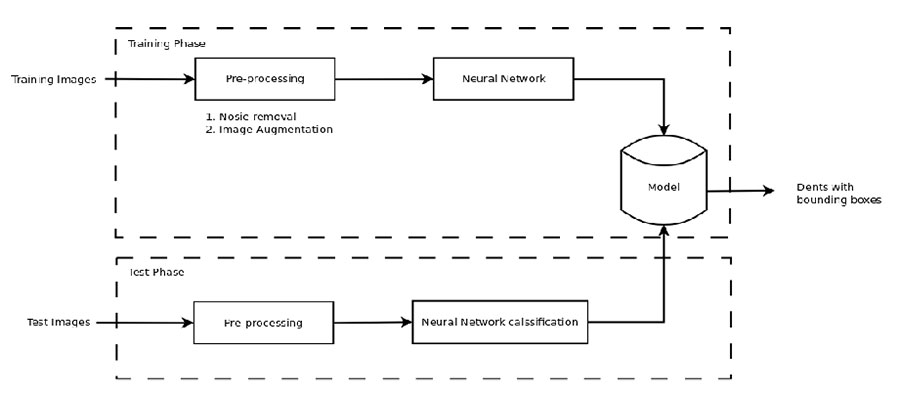

Customized YOLOv3 network to increase accuracy
Data pre-processing and Augmentation ideas used
Data pre-processing was kept to minimum so that the features of dent was kept as natural as possible and enhanced where possible
Denoising - Noise is generally considered to be a random variable with zero mean. Consider a noisy pixel, p= p0+n where p0 is the true value of pixel and n is the noise in that pixel. You can take a large number of the same pixels (say N) from different images and compute their average. Ideally, you should get p=p0 since mean of noise is zero. This property was used to remove the noise from the image.
Intensity Correction - Intensity of the image had to be corrected based on the lightning conditions. This was done using Point operators (pixel transforms) and Neighbourhood (area-based) operators
Data pre-processing and Augmentation ideas used
Data Augmentation
